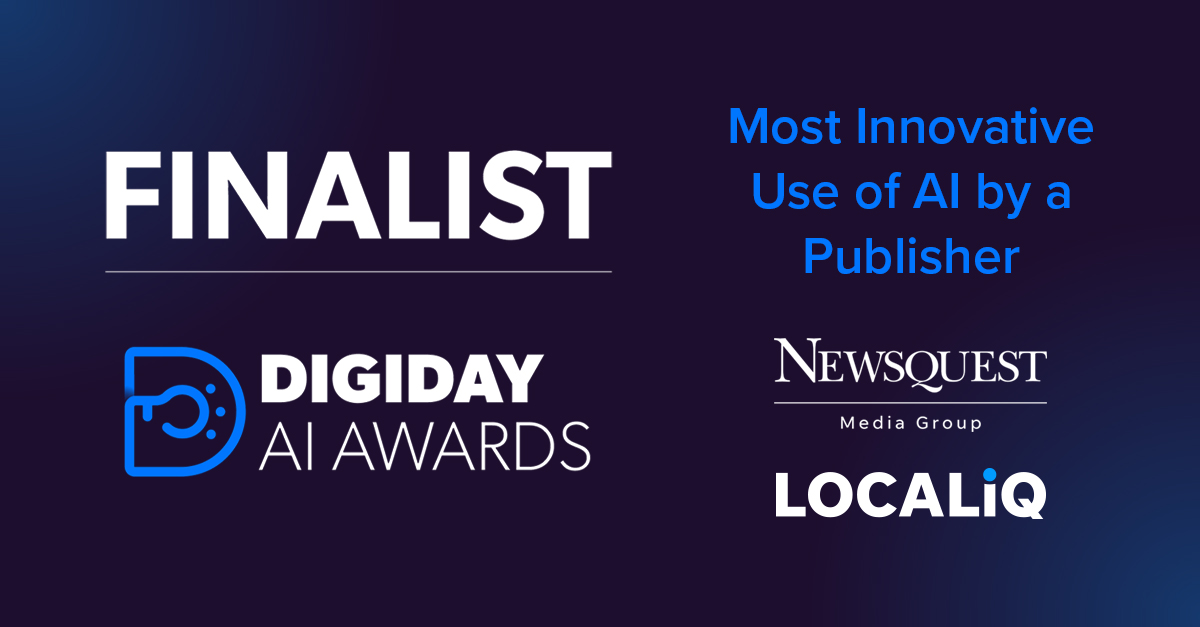Wondering how to advertise your business in 2025? Well, you’ve come to the right place. In this blog we’ll explore a range of advertising tactics to help you shine a spotlight on your business.
Table of contents:
How to advertise your business: A summary
Advertising in 2025 requires a strategic approach across multiple digital channels. From PPC and display advertising to social media ads and influencer marketing, businesses must leverage a mix of paid and organic tactics to stay competitive. A well-optimised website and strong SEO strategy remain essential for visibility, while emerging trends like VR marketing offer new ways to engage audiences.
Introduction
It’s amazing to think how much advertising has changed over the years. I mean, we’ve gone from newspaper ads and billboards to this crazy world of TikTok trends and AI-powered personalisation.
We’ve gone from classics, like David Oglivy’s sensational Rolls Royce ad, which was the longest-running and most profitable ad by the company at the time*, to viral short-form videos that blow up in a few days, garner millions of views, and then fall away from the limelight just as fast.
*Fun fact: It ran for four years until Oglivy decided to pull out from the client as HE himself wasn’t happy with the production quality of Rolls Royce.
It’s a wild ride, and things feel faster and crazier than ever. The thing is, with all this change comes a whole lot of questions.
How do you keep up? What are the best ways to get your business seen in this ever-evolving landscape? And, most importantly, how do you ensure you’re not just throwing money into a black hole?
That’s what we’re talking about here today – this is your complete guide to how to advertise your business in 2025. These are the common and often overlooked strategies and trends that are shaping the future of advertising.
All to give you a complete roadmap to thriving this year.
Yeah, that’s it. Not too complicated. Let’s get into it.
How to advertising your business in 2025
A quick note before we start: don’t feel as though you need to follow through ALL these strategies. In fact, don’t, unless you have a mega marketing budget.
The trick to success is to figure out where your ideal customers are and then dedicate your resources to these specific places. If you want to branch out later, then that’s fine, but it’s best to pick a handful of strategies to master rather than being mediocre across the board.
Now, the strategies themselves.
#1 – Use AI to reach your goals faster
AI is absolutely everywhere right now, and for good reason. It’s capable of handling vast quantities of data, handling near-infinite numbers of tedious tasks, and can essentially take your advertising to the next level in whatever way you need it to.
However, and this is a big issue, there are plenty of challenges and caveats you must be aware of.
Keeping this to ads, you absolutely can and should be using AI to:
- Generate content and copy, both images and text, typically using an expert-in-the-loop approach that lets humans edit and optimise the content
- Create hyper-personalised ads that show the right message to the right person at the right time.
- Analyse mountains of data available to you to help you figure out exactly who your audience actually is and what makes them tick
- Creating all kinds of engagement to connect to that audience in the best possible way
Of course, you can also improve your day-to-day operations using AI to write emails, summarise reports, help with brainstorming sessions, create schedules, and handle any heavy lifting that allows your staff to get on with doing what they actually do best.
Now, the caveats, and there’s one important one to focus on: Don’t get carried away with shiny object syndrome.
This means getting caught up with the trends and adopting, onboarding, and spending a ton of money on platforms, tools, applications, and APIs that end up being a waste of time.
It’s easy to think that all these tools exist and are going to make you a lot of money, but most of them won’t.
It’s far better to take time to figure out what problems your business is facing (not enough personalisation, not enough ads, needing help making content, etc) and find a tool that can help solve that specifically.
Then, it’s a case of STICKING with that tool and adapting your workflow to fit it, eventually mastering it, and having it as a core staple of your advertising operations.
Far too many businesses bounce from tool to tool, hoping to find one that fits their existing business model exactly and then believe it’ll take care of everything, but that’s just not how these things work. You need a tool that fixes the problem, then you need to adapt to fit it, and then stay with it. Don’t get caught up with endless subscriptions to endless solutions.
#2 – Display advertising and PPC are still firm favourites
Even in the age of so much change and new technology, it’s important to remember that the tried-and-true advertising approach still packs a punch. On this note, display advertising and Pay-Per-Click campaigns reign tall.
Think of display ads as the billboards of the internet.
They’re those eye-catching banners and images you see plastered across websites, tempting you to click and learn more.
And PPC?
Well, that’s where you pay for your ads to appear at the top (or bottom) of search engine results pages. It’s like a fast track to getting your business seen by people actively searching for what you offer.Now, some people think display and PPC are old news, but they’re still incredibly effective when done right. The key is targeting.
You can’t just throw up a random banner ad and hope for the best. You need to know who you’re trying to reach and where they’re hanging out online.
Here’s the lowdown:
- Display advertising: Think strategically about where your ads appear. Are there specific websites or blogs that your ideal customers frequent? Target those sites. Also, make sure your ads are visually appealing and have a clear call to action. Don’t be afraid to experiment with different ad formats and designs to see what works best. Retargeting is also your friend here. Ever visit a website and then see ads for that same website everywhere you go? That’s retargeting, and it’s a powerful way to remind potential customers about your business.
- PPC (Pay-Per-Click): Keywords are king (and queen!). Do your research and figure out what words and phrases your target audience is using when they search online. Bid on those keywords, and make sure your ad copy is compelling and relevant to what people are searching for. A/B testing is crucial here. Try out different ad copy and landing page variations to see which ones convert best. And don’t forget about negative keywords! These help you avoid showing your ads to people who aren’t interested in what you offer, saving you money in the long run.
The beauty of display and PPC is that they’re highly measurable. You can track everything from impressions and clicks to conversions and ROI. This data allows you to fine-tune your campaigns and make sure you’re getting the most bang for your buck.
So, don’t write off these classic advertising methods. When used strategically and combined with the other tactics we’ve discussed, display advertising and PPC can be powerful tools.
They’re like the reliable workhorses of the advertising world – not always the flashiest, but they get the job done.
#3 – Start offering immersive experiences
While it may feel as though virtual reality (VR) technology didn’t explode into the spotlight as much as people thought it would, there’s still a serious and still-growing market for VR immersive experiences, and plenty of opportunities you should be taking seriously.
Statistics show there are around 171 million VR users worldwide, with a user penetration growth rate of 54% over 2025. Augmented Reality, a mix of virtual reality and real life, is also increasing in popularity.
So, how could your business make the most of these new technologies?
Well, firstly, this strategy is only really ideal if your target audience are those using virtual reality headsets.
Let’s say you have a product or service you want to be more accessible. Say, for example, you’re a museum, and you want to highlight a cool exhibition by creating a virtual experience of it.
You may want to create an ad that’s a truly unforgettable experience through the likes of try-on experiences (virtual reality headset pop-ups out in public), interactive product demos, or immersive storytelling experiences.
But it’s not just all games and tech.
VR is integrating itself into day-to-day life slowly and surely, especially since the launch of the Meta Quest 3 and its mixed reality settings. Take a look at this trailer.
Productivity on Meta Quest 3 | Nailed it
If you find your ideal customers using this kind of tech, then it’s well worth taking a moment to get creative of how you can reach out and connect with them through this still relatively-new medium.
#4 – Use social media to advertise your business
I know, I know, you’ve heard it all before – social media is important.
The truth is, it’s not going anywhere soon, and it’s only becoming more crucial for businesses to connect with their audience on platforms like Facebook, Instagram, TikTok, and LinkedIn.
However, the way you advertise on social media has changed a lot in the last few years, especially with consumers becoming increasingly savvy to influencer marketing, pushy brands, and businesses who want to make a fast buck.
The trick to successful social media advertising in 2025 is authenticity. Ah yes, the classic buzzword, but only so because it’s so legitimately important. But what does authenticity actually mean in the context of social media advertising?
It’s about being real, transparent, and genuinely connecting with your audience. It’s about building relationships, not just chasing transactions.
Here’s how to inject authenticity into your social media advertising:
- Show the real you: Give your audience a glimpse behind the scenes. Share your story, your values, and your personality. Let them see the people behind the brand.
Be transparent: Don’t be afraid to be vulnerable. Share your challenges and your successes. People connect with honesty and vulnerability. - Engage with your audience: Respond to comments, answer questions, and participate in conversations. Show your audience that you’re 1 listening and that you care.
- Create valuable content: Share content that is informative, entertaining, or inspiring. Provide value to your audience, and they’ll be more likely to stick around.
- Partner with authentic influencers: Choose influencers who genuinely love your brand and believe in your products or services. Their passion will shine through in their content and resonate with their audience.
- Use social listening: Pay attention to what people say about your brand on social media. Use this feedback to improve your products, your services, and your overall customer experience.
Expert tip: Don’t try to be someone you’re not. Be true to yourself and your brand, and your audience will appreciate your authenticity. Authenticity is not a trend; it’s a fundamental shift in how consumers interact with brands. By embracing authenticity in your social media advertising, you can build trust, foster loyalty, and create lasting relationships with your audience.
#5 – Video is pretty much essential
As of 2024, over 3.37 billion internet users consumed video content, with video now accounting for around 82% of all internet traffic.
Basically, people consume video content more than any other, so when it comes to advertising, you absolutely need to produce video content since that’s what people are watching.
And if they’re not watching you, they’re watching someone else.
While snappy, short-form video ads are still popular, things are changing as long-form content is increasingly popular.
These are pieces of content that allow brands to tell deeper, again more authentic, stories and connect with audiences on a much deeper level.
We’re talking about strategies like creating and hosting your own podcast, creating mini-docuseries about your industry, posting behind-the-scenes glimpses of what you’re up to, in-depth product demos, webinars, and basically any form of long-form content that can either entertain, provide real value, or, ideally, both.
Any way you can connect with your audience and give them something to engage with.
Want some more ideas on using video to advertise your business? Watch our free webinar below:
Interested in getting started with video marketing? Take a look at our video services page to see what we offer and then get in touch.
#6 – Influencers are still relevant, but it’s different
People trust people. That’s why influencer marketing is so powerful.
People love to look up to others and take their recommendations, but these days, consumers are far more savvy with who they’re taking advice from and are fully aware of scams and businesses taking them for a ride.
Just look at the popular coupon extension, Honey.
This app has been riding the wave of top influencer partnerships and increased brand awareness for years but is now being dragged through the mud for poor business practices and shady money-making tactics.
This kind of reputation switch is seen by millions of people, and it only adds to the concern that consumers have when taking recommendations from influencers.
For your business, you need to find reliable influencers that help create positive respect and perspectives for your brands.
Statistics also show that nano-influencers (accounts with 100 to 10,000 followers) also get the best results, especially on platforms like TikTok.
But here’s the trick: it’s not just about finding the biggest influencer with the most followers. It’s about finding the right influencer who aligns with your brand values and can authentically connect with your ideal customer.
#7 – Know your audience like the back of your hand
I’ve spoken about the “ideal” customer, and while this kind of understanding has been a current advertising trend for a few years, you’d be surprised how many businesses actually miss this crucial step.
Most commonly, this translates as businesses guessing or already thinking they know who their customers are rather than looking at the data and seeing exactly how they are.
Most of the time, the difference is surprising.
So, before you even think about creating an ad, you need to know exactly who you’re talking to.
- Who are they? What are their demographics (age, location, interests, etc.)?
- What are their pain points? What problems are they trying to solve?
- What are their goals? What are they hoping to achieve?
The more you know about your audience, the better you can tailor your ads to their needs and desires. Remember, it’s about creating a connection.
Look at the data you have. Run surveys and look at the demographics.
Where do these people live? What are they interested in? What sort of family dynamic do they have? What do they care about? How much income do they have? How old are they?
All questions whose answers give you complete clarity when creating successful ad content.
You can also use tools to help with this process, including:
- Google Analytics: This treasure trove of data can tell you everything from where your website visitors are coming from to what pages they spend the most time on.
- Social media analytics: Platforms like Facebook and Instagram offer detailed insights into your followers’ demographics, interests, and behaviours.
- Market research: Don’t be afraid to conduct surveys, polls, and focus groups to gather valuable firsthand information from your target market.
#8 – Make sure you set crystal-clear goals
What do you want to achieve with your advertising? More website traffic? Increased brand awareness? A surge in sales? Without clear goals, you’re essentially sailing without a compass.
Typically, you’ll want to set SMART goals, since these can help you be specific, keep the team on the same page, and allows you to accurately revise your goals moving forward, identifying what went well, what went wrong, and what can be improved.
- Specific: Clearly define what you want to achieve.
- Measurable: Use metrics to track your progress.
- Achievable: Set realistic goals that you can actually reach.
- Relevant: Ensure your goals align with your overall business objectives.
- Time-bound: Set a deadline for achieving your goals.
For example, instead of just saying, “I want more website traffic,” a SMART goal would be “I want to increase website traffic by 20% in the next three months.”
#9 – Own a website that works great and gets found
We can’t talk about how to advertise your business and not talk about your website.
It’s the place visitors and potential customers go to connect with your business, and it’s a whole form of advertising in itself. If you don’t offer a great digital experience, potential customers won’t overcome their reservations and will go elsewhere.
What’s more, if your website isn’t up to scratch, then all the effort and resources you spend on advertising will be nothing since customers will come to your site through your ads but won’t like what they see.
It’s not just about looking pretty (although that helps!). It’s about creating a user-friendly experience that makes it easy for people to find what they’re looking for and encourages them to take action.
Here are a few tips:
- Design matters: Nobody wants to navigate a website that looks like it’s stuck in the 90s. Your website should be clean, modern, and easy to navigate. Think clear menus, intuitive layouts, and a consistent brand aesthetic. Mobile-friendliness is a MUST. Most people are browsing on their phones these days, so your website needs to look and function perfectly on any device.
- SEO is vital: SEO (Search Engine Optimisation) is the magic that helps your website get found on search engines like Google. Here are a few SEO essentials:
- Keyword research: Figure out what words and phrases your target audience is using when they search online. Sprinkle these keywords naturally throughout your website content. Don’t stuff keywords – Google is way smarter than that.
- On-page optimisation: This is all about optimising the elements on your website, like title tags, meta descriptions, and header tags. These little details make a big difference in how search engines understand your website.
- Content is king and queen: Create high-quality, valuable content that your target audience will love. Blog posts, articles, videos – anything that provides information, entertainment, or solves a problem. The more valuable your content, the more likely people are to share it, which helps boost your SEO.
- Link building: Think of links from other websites as votes of confidence. The more high-quality links you have pointing to your website, the better your SEO will be.
- User experience (UX) is key: A beautiful website is useless if it’s hard to use. Make sure your website is easy to navigate, loads quickly, and has a clear call to action. You want people to find what they need and take the next step, whether it’s making a purchase, signing up for your newsletter, or contacting you.
Analytics are your eyes and ears: Use tools like Google Analytics to track your website traffic and see how people are interacting with your site. This data will help you identify areas for improvement and make sure your website is working as hard as it can for you.
Invest in a well-designed, SEO-optimiaed website, and you’ll be well on your way to advertising success. It’s like building a solid foundation for your online empire – you can’t build a skyscraper on shaky ground!
#10 – Track, measure, and optimise
And finally, the key to continuous improvement – analyse your work, see what works, double down on what you do best, and improve or cull what doesn’t. In advertising, the work doesn’t stop once your ads are live. It’s crucial to track their performance and make adjustments along the way.
And we’re talking important metrics, like:
- Website traffic: How many people are visiting your website from your ads?
- Conversion rates: How many people are taking the desired action (e.g., making a purchase, filling out a form)?
- Return on investment (ROI): Are you getting a positive return on your advertising spend?
Expert tips:
Use tools like Google Analytics and your chosen advertising platforms’ built-in analytics to track your progress and make data-driven decisions.
Conclusion
While a lot of these strategies may seem like common sense, the truth is that so many businesses overcomplicate things and fail to achieve the basics needed for advertising success.
Everyone’s on the hunt for the secret sauce that will push the needle on the dial of your success to the next level – a trick or hack that will do everything for you. That simply doesn’t exist.
Instead, mastering the fundamentals, getting them right, and sticking to them consistently and proactively – that’s what’s going to bring you sustainable, long-term success that will ensure your business thrives.
And, of course, if you need any guidance, advice, or you simply want to outsource your advertising efforts, get in touch with the team here at LocalIQ. We’re always happy to help you win because when you win, we win.
Get in touch with us today and see what we can do for you.





